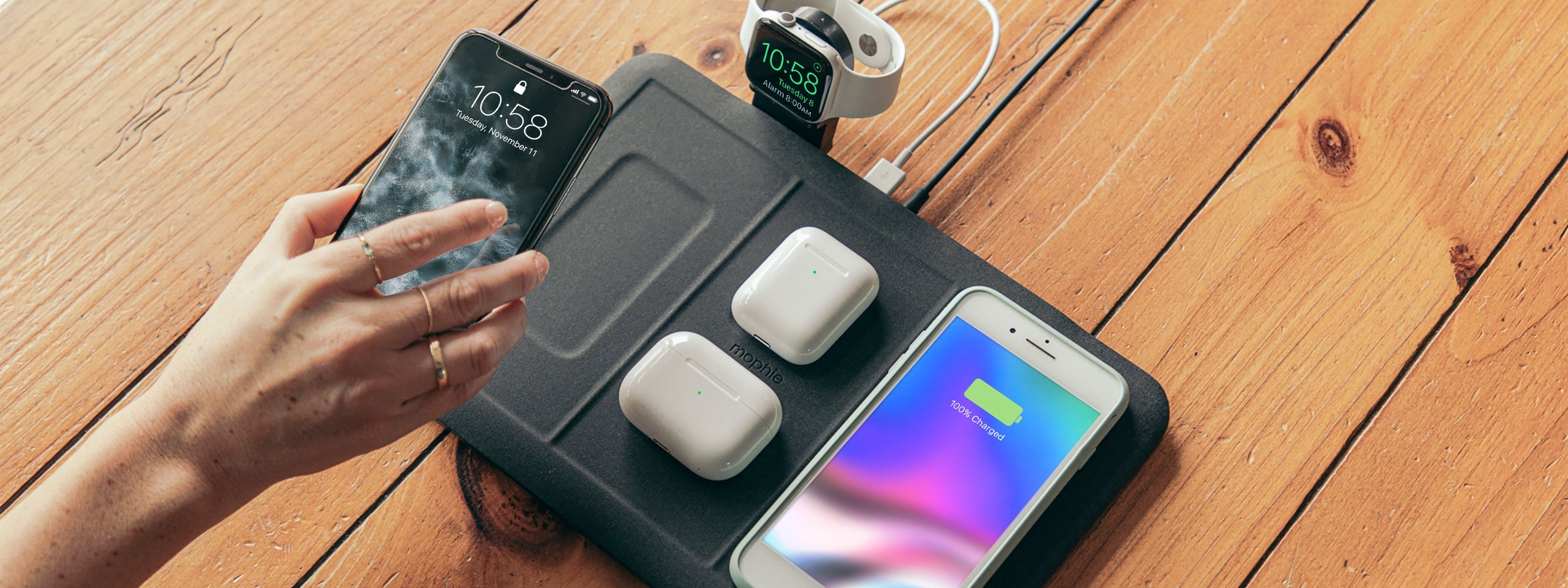How Does a Wireless Charger Work?

Charging your phone without a cable is convenient. With wireless charging, you never have to worry about tangled or lost cables.
You don’t have to plug into an adapter or outlet that is gunked up, loose, or broken. You can charge on-the-go and achieve maximum productivity and convenience.
But how does wireless charging technology work? Are there any pros and cons to these chargers? We’ll explain everything you need to know about wireless charging.
What Is Wireless Charging?
Also known as inductive charging, wireless charging is exactly what it implies: charging without the use of any wires or cables, or the need to plug anything in. These chargers come in numerous forms including stands, mounts, mats, and magnetic devices that attach directly to the back of your phone.
How Wireless Charging Works
How does a wireless charger work? Wireless power transfer is subject to the electromagnetic field and a coil of wire. The charging device generates the electromagnetic field and the battery-powered device contains the coil of wire. When the device is placed in the electromagnetic field — by putting your phone on the charging pad — the interaction of the electromagnetic field with the coil generates energy. The charging circuit sends this energy to the battery. How long will these chargers take to deliver full power to your phone? It varies. It could take an hour or it could take two. How fast wireless charging works depends on the manufacturer of the charger. Some products feature fast-charging circuits, but going from a flat-to-full battery is never instantaneous.
Wireless Charging Technology Explained
Both devices — charger and phone — need to conform to the same standard, which explains why wireless charge (/power/wireless-chargers/) products don’t work with every device from all manufacturers. If you don’t know what wireless charging standard is used by your device, check with the manufacturer. Apple and other major manufacturers use the Qi standard for wireless power transfer. Devices that use this standard will not work with standards like Airfuel, Powermat technology, or PMA — Power Matters Alliance. If you use a variety of devices with varying wireless format standards, then a wireless charger may not be the best charging option for you.
Pros and Cons of Wireless Charging

Now that we’ve explained how wireless charging technology works, we can take a look at its pros and cons:
One of the benefits of wireless charging is how easy it is.
First, establish that your device has the same wireless charging standard — like Q1 or MagSafe — as your wireless charger. Then, simply put your device on the wireless charging surface. Charging automatically begins on contact.
Make sure your device is properly aligned on the surface so you get a full charge.
Another wireless charging benefit includes the convenience of not fussing with tangled cables! You can also charge on the go if you have a portable design, such as a magnetic wireless charger that attaches to the back of your phone.
The only disadvantage is that it can take longer to charge than its wired counterparts and it’s more of an investment than wired chargers. However, many will agree that the ease of setting your device on a wireless charger far outweighs any cons.
Invest in Better Charging & Protection with mophie
It’s time to find your ideal charger at mophie! Both wireless chargers and wall chargers have their place and offer you effective charging capabilities. Consider your work-and-play lifestyle to determine the power accessories that’ll work best for you.
Take full advantage of the convenience that wireless charging offers. Discover exactly how it works and how it can make your life easier with help from the experts at mophie.
FAQs
Loading results...
